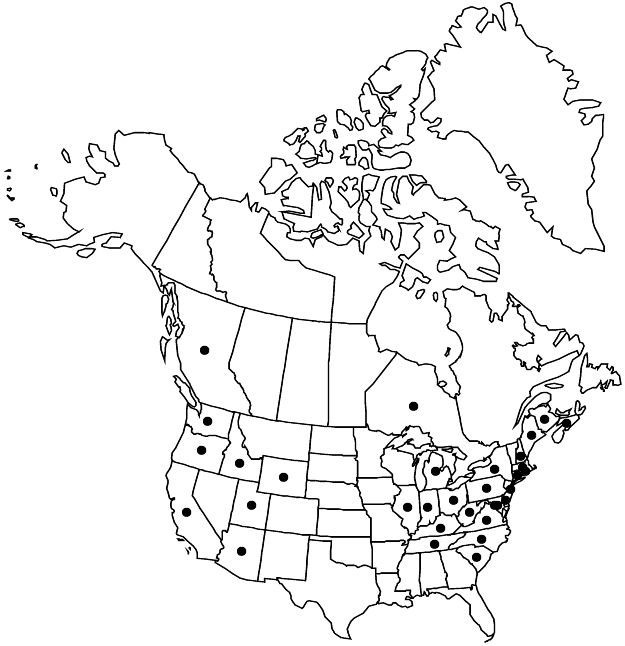Prunus avium
Fl. Suec. ed. 2, 165. 1755.
Trees, not suckering, 60–200 dm, not thorny. Twigs with terminal end buds, glabrous. Leaves deciduous; petiole (14–) 20–40 mm, nearly glabrous or sparsely hairy adaxially, glandular distally or on margins at bases of blades, glands 1–3, discoid; blade oblong, elliptic-obovate, or obovate, (4–) 7–14 × (2.5–) 4–8.5 cm, base obtuse to rounded, margins doubly crenate-serrate, teeth blunt, glandular, apex abruptly short-acuminate, abaxial surface moderately hairy (especially midribs and veins), adaxial glabrous. Inflorescences 1–3-flowered, umbellate fascicles. Pedicels (14–) 25–52 mm, glabrous. Flowers blooming at leaf emergence; hypanthium tubular-urceolate, 5–7 mm, glabrous externally; sepals reflexed, oblong, 4–6 mm, margins entire or sparsely and irregularly toothed, surfaces glabrous; petals white, obovate to suborbiculate, 12–15 mm; ovaries glabrous. Drupes dark red to purplish black, globose, 13–30 mm, glabrous; mesocarps fleshy; stones subglobose, not flattened. 2n = 16.
Phenology: Flowering Mar–May; fruiting Jun–Jul.
Habitat: Roadsides, stream banks, forest edges, disturbed forests
Elevation: 0–1600 m
Distribution

Introduced; B.C., N.B., N.S., Ont., Ariz., Calif., Conn., Del., D.C., Idaho, Ill., Ind., Ky., Maine, Md., Mass., Mich., N.H., N.J., N.Y., N.C., Ohio, Oreg., Pa., R.I., S.C., Tenn., Utah, Va., Wash., W.Va., Wyo., Eurasia
Discussion
Cultivars of Prunus avium are grown in North America both for their attractive flowers, especially where the Japanese ornamental cherries are not hardy, and for their sweet fruits. Most of the sweet cherry crop in North America is grown in the Pacific Coast states and in Michigan and Ontario. Most varieties are self-incompatible and require pollen from a variety in a different incompatibility group in order to set fruits.
Selected References
None.